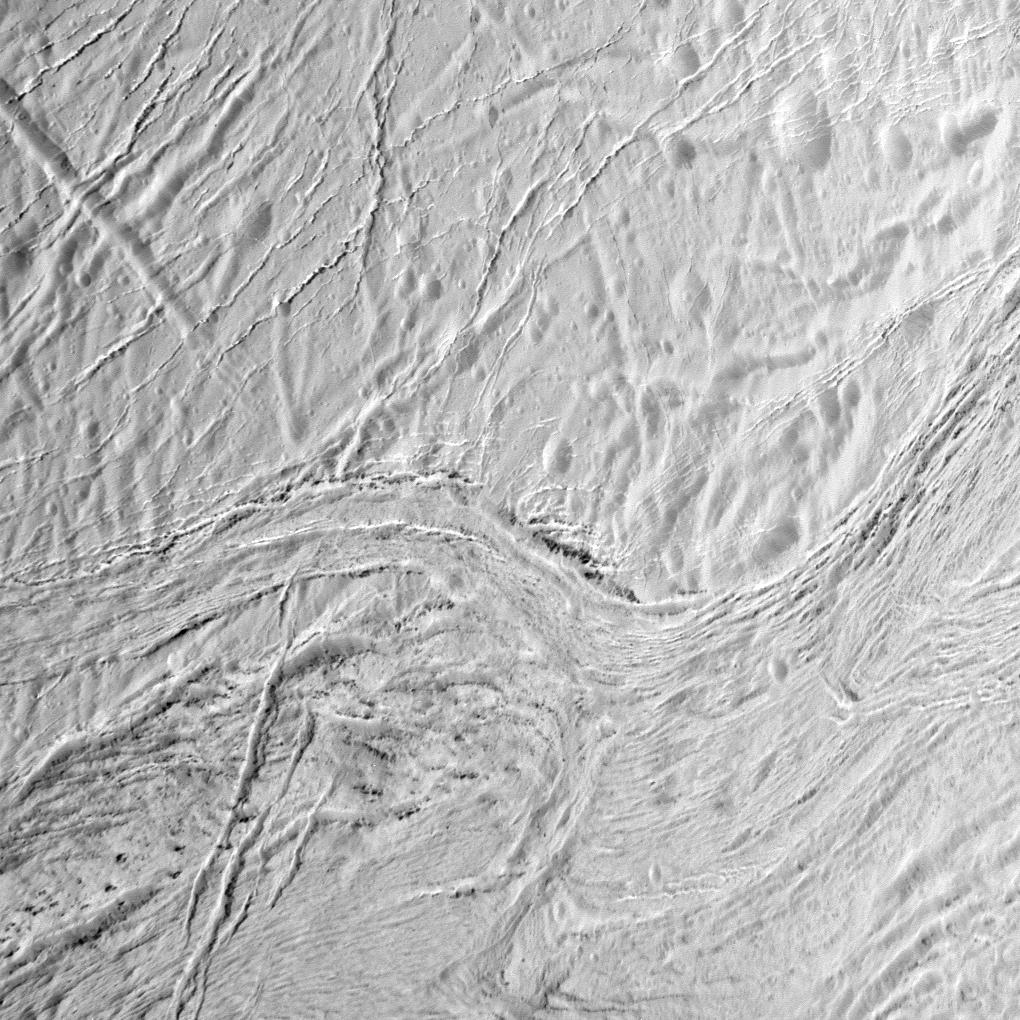Frozen Fractures

| PIA Number | PIA17209 |
|---|---|
| Language |
|
During its final close flyby of Saturn's moon Enceladus, NASA's Cassini spacecraft captured this view featuring the nearly parallel furrows and ridges of the feature named Samarkand Sulci.
This view is centered on terrain at 13 degrees north latitude, 336 degrees west longitude. The image was taken with the Cassini spacecraft narrow-angle camera on Dec. 19, 2015, using a spectral filter, which preferentially admits wavelengths of near-ultraviolet light.
The view was acquired at a distance of approximately 8,000 miles (12,000 kilometers) from Enceladus and at a Sun-Enceladus-spacecraft, or phase, angle of 58 degrees. Image scale is 243 feet (74 meters) per pixel.
The Cassini mission is a cooperative project of NASA, ESA (the European Space Agency) and the Italian Space Agency. The Jet Propulsion Laboratory, a division of the California Institute of Technology in Pasadena, manages the mission for NASA's Science Mission Directorate, Washington. The Cassini orbiter and its two onboard cameras were designed, developed and assembled at JPL. The imaging operations center is based at the Space Science Institute in Boulder, Colorado.
For more information about the Cassini-Huygens mission visit http://saturn.jpl.nasa.gov and http://www.nasa.gov/cassini. The Cassini imaging team homepage is at http://ciclops.org.
Credit: NASA/JPL-Caltech/Space Science Institute
